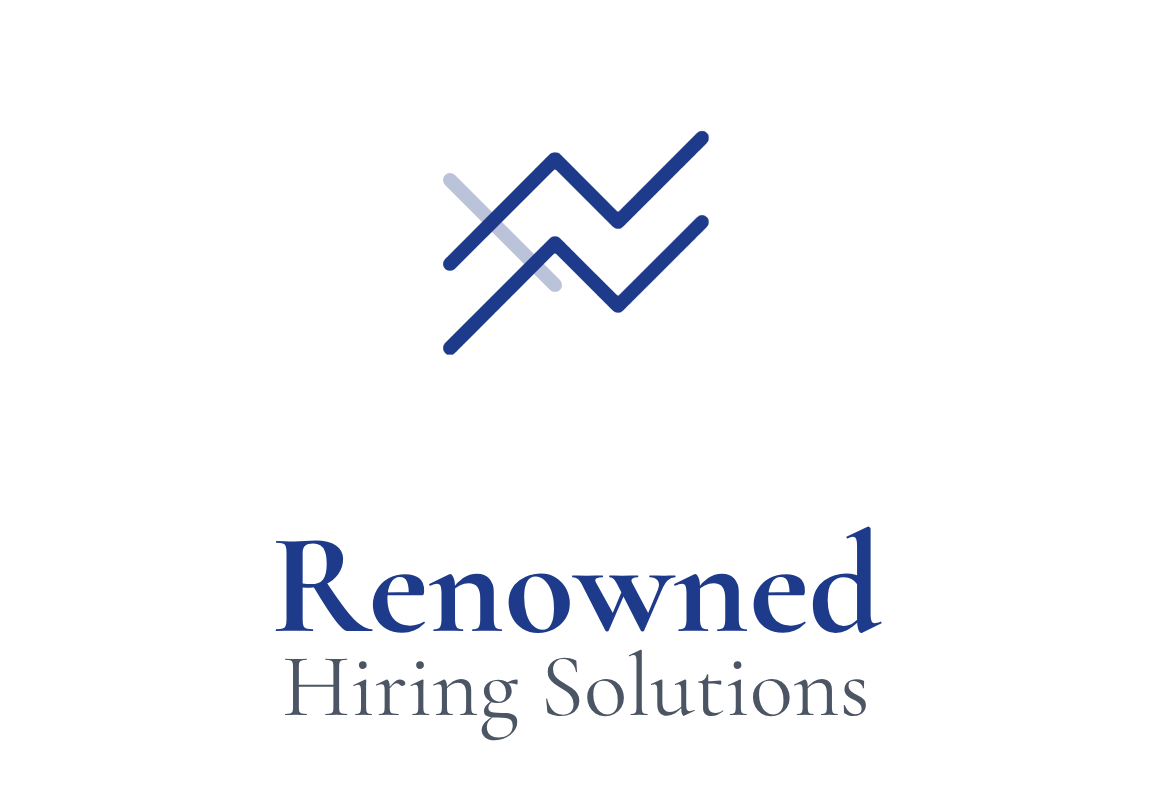
The U.S. Healthcare Workforce Crisis: A Strategic Imperative
The healthcare sector is the epicenter of the U.S. labor crisis, caught in a perfect storm of surging demand, mass retirements, and systemic burnout. Solving this requires a fundamental shift in talent strategy to address the healthcare workforce crisis.
A System Under Unprecedented Strain: Quantifying the Healthcare Workforce Crisis
The numbers paint a stark picture of an industry struggling to keep pace. The gap between the demand for clinicians and the available supply is widening, creating a cycle of understaffing that threatens patient care and financial stability. This is the core of the healthcare workforce crisis.
1.6M
unfilled positions in healthcare and social assistance, one of the highest of any sector. (Source: AHA)
66%
of nurses cite burnout as a primary reason for leaving the profession, fueled by chronic understaffing.
65,000
qualified applicants were turned away from U.S. nursing schools due to faculty and site shortages.
86,000
projected total physician shortage by 2036, according to the AAMC, potentially higher without GME funding. (Source: AAMC)
projected shortage of FTE Registered Nurses (RNs) by 2037. (Source: HRSA)
302,440
projected shortage of FTE Licensed Practical Nurses (LPNs) by 2037, with supply meeting only 64% of demand. (Source: HRSA)
The Dual Crises in Clinical Staffing: A Deeper Dive into the Healthcare Workforce Crisis
While shortages exist across many roles, the crises facing nursing, pharmacy, and primary care are particularly acute and illustrative of the systemic challenges that require strategic intervention to mitigate the healthcare workforce crisis.
The Nursing Burnout Cycle and Retention Challenges
The nursing shortage is a self-perpetuating crisis loop. An aging “Silver Tsunami” of experienced nurses is retiring, while educational bottlenecks prevent their replacement. This initial gap leads to poor working conditions and overwhelming stress, which in turn drives even more nurses out of the profession, making the staffing gaps even worse. The average hospital turnover rate stood at 20.7% in 2024, with RN-specific turnover at 18.4%.
- The Cost of Turnover: Each departing RN costs a hospital an average of $61,110 to replace, creating a massive hidden drain on resources. For the average hospital, this translates into an annual loss of between $3.9 million and $5.8 million due to nurse turnover alone. (Source: Bucketlist)
- Early-Career Churn: Nearly 18% of newly licensed RNs quit the profession entirely within their first year, and 30.2% of all new healthcare hires leave within the same period, highlighting systemic failures in onboarding and support. (Source: AHA)

The Pharmacist Pipeline Problem and Physician Shortages
A similar crisis is unfolding in pharmacy. Declining school enrollment over the last decade has constricted the talent pipeline, while expanding responsibilities and workload pressures are fueling burnout. Traditional recruitment methods are failing to reach a candidate pool that is increasingly stressed and disengaged from general platforms.
- A Holistic Value Proposition: Attracting top pharmacy talent now requires more than salary; it demands a focus on student loan assistance, work-life balance, and clear career growth. (Source: AHA)
- Primary Care Deficit: HRSA projects a shortage of 87,150 primary care physicians by 2037. As of June 2024, approximately 75 million people already live in a designated primary care Health Professional Shortage Area (HPSA). (Source: HRSA)
- Behavioral Health Emergency: The most severe crisis is in behavioral health, with projected shortfalls of 113,930 addiction counselors, 87,840 mental health counselors, 79,160 psychologists, and 50,440 psychiatrists by 2037. (Source: HRSA)

The Geography of Scarcity: Rural-Urban Divide in Healthcare Talent
The national healthcare workforce crisis is not uniformly distributed. It is a story of geographic maldistribution, with a deep and widening chasm between urban centers and rural communities, creating two different healthcare systems within one country.
A Tale of Two Healthcare Systems: The Quantitative Divide
Rural (nonmetro) areas have significantly fewer primary care physicians (5.1 per 10,000 residents) compared to urban areas (8.0 per 10,000). This disparity extends to registered nurses (65.3 per 10,000 in rural vs. 93.6 in urban). While rural areas are home to 20% of the U.S. population, only 10% of the nation’s physicians choose to practice there.
- Concentration of Shortage Areas: Over two-thirds (66.3%) of all primary care Health Professional Shortage Areas (HPSAs) are located in rural areas. Nearly 70% of all rural or partially rural counties carry an HPSA designation. (Source: HRSA)
- Widening Gap: By 2037, nonmetro areas are projected to face a devastating 60% shortage of physicians, six times higher than the 10% shortage projected for metro areas. For RNs, the projected shortage is more than double in nonmetro areas (13%) compared to metro areas (5%). (Source: HRSA)

Root Causes of Rural Maldistribution
The concentration of shortages in rural America stems from a complex interplay of economic, social, educational, and policy factors. Rural communities often struggle to compete with urban centers on salary and benefits, and face perceptions of professional and social isolation.
- The Pipeline Problem: The number of medical school entrants from rural backgrounds fell by 28% between 2002 and 2017, directly impacting the future supply of rural providers. (Source: AAMC)
- Infrastructure and Policy Gaps: Rural hospital closures and a lack of universal broadband limit access to care and telehealth. Federal policies like the Conrad 30 J-1 visa waiver are essential but require consistent action. (Source: JEC)

Anatomy of the Recruiting Problem: Core Challenges for Clinical Staff in the Healthcare Workforce Crisis
Beneath the macro-level statistics of shortages and maldistribution lies a complex set of challenges that make the day-to-day work of recruiting and retaining clinical staff exceptionally difficult. These issues are deeply intertwined, exacerbating the healthcare workforce crisis.
The Burnout Epidemic and Its Ripple Effect
Clinician burnout is not a temporary phenomenon but a chronic condition endemic to the healthcare system, acting as a primary driver of attrition. In 2024, 49% of physicians reported feelings of burnout, a figure significantly higher than pre-pandemic levels. Overall, 76% of all healthcare workers report exhaustion and burnout.
- Systemic Drivers: Administrative burden (e.g., prior authorization requests), a culture of workplace violence (experienced by nearly 8 in 10 healthcare workers), and the vicious cycle of understaffing all contribute to burnout. (Source: Excelforce)
- High Intent to Leave: 41% of nurses and 28.7% of all healthcare workers plan to leave their jobs within the next two years. Two out of three physicians have considered an employment change. (Source: HRSA)

Compensation, Pipeline, and Inefficient Hiring
While compensation is crucial, the current environment is marked by a growing disconnect between pay and the perceived value of the work. For physicians, average compensation increase in 2024 was only 2.9%. For nurses, competitive compensation is essential, but salaries vary widely by geography.
- Fractured Talent Pipeline: Enrollment in entry-level baccalaureate nursing programs fell by 1.4% in 2022, the first decline in two decades. Physician training faces bottlenecks in residency slots due to federal funding caps. (Source: AHA)
- Inefficient Hiring Machinery: 57% of healthcare hiring leaders reported an increased time-to-hire in 2024. The average time to fill an experienced RN position is 94 days, and over 200 days for some physician specialties. Untrained interviewers and slow decision-making are major culprits. (Source: Goodtime.io)
An Integrated Strategy to Heal the System: Solving the Healthcare Workforce Crisis
Recruiting in healthcare cannot be transactional. It must be a holistic strategy that builds pipelines, develops careers, and fixes the underlying issues that cause talent to leave, thereby addressing the healthcare workforce crisis at its root.
Redefine Your Employee Value Proposition (EVP)
Move beyond compensation alone. Craft a holistic EVP that emphasizes supportive management, flexible work, positive culture, and tangible growth opportunities. Invest in comprehensive onboarding, mentorship, and clear career ladders to foster long-term retention. (Source: Clinch Talent)
Leverage Technology and Automation
Deploy AI-powered platforms (virtual scribes, automated documentation) to reduce administrative burden and combat clinician burnout. Modernize recruitment with Candidate Relationship Management (CRM) systems to build pipelines, automate communication, and streamline scheduling. (Source: SmartRecruiters)
Innovate Staffing & Care Delivery Models
Embrace flexibility with internal float pools, per diem staff, and job-sharing. Shift care delivery outside hospital walls to home-based and outpatient services. Integrate telehealth and virtual nursing platforms to expand access and create flexible roles. (Source: 3B Healthcare)
Modernize Your Recruitment Playbook
Adopt sophisticated digital outreach: targeted paid media, compelling career landing pages, and virtual career fairs. Offer enhanced benefits like student loan repayment programs (e.g., Vanderbilt’s $24,000 nurse loan repayment). Create a superlative candidate experience with meticulously planned interview visits and prompt expense reimbursement. (Source: UrbanBound)
Advocate for Policy Change & Pipeline Growth
Lobby Congress to lift the 1997 cap on Medicare-supported GME residency slots. Push for permanent expansion of programs like the Conrad 30 J-1 visa waiver for underserved areas. Advocate for modernizing scope of practice laws and supporting interstate licensure compacts to enhance workforce mobility. (Source: AAMC)
Build Resilient Pipelines & Invest in Growth
Forge deep, strategic partnerships with nursing and pharmacy schools for dedicated graduate pathways. Architect clinical career ladders and professional development programs. Design incentive packages, including student loan assistance, to address real-world pressures. Our process optimization and manager training directly address the root causes of burnout, fostering a culture of support. (Source: AHA Trustee Services)
Build a Healthier Talent Ecosystem: Overcoming the Healthcare Workforce Crisis
Your ability to deliver world-class patient care depends entirely on the quality and stability of your clinical teams. Let’s architect a talent strategy that ensures your most valuable asset is supported and sustained for the long term, effectively solving the healthcare workforce crisis.
Schedule a Healthcare Talent Consultation